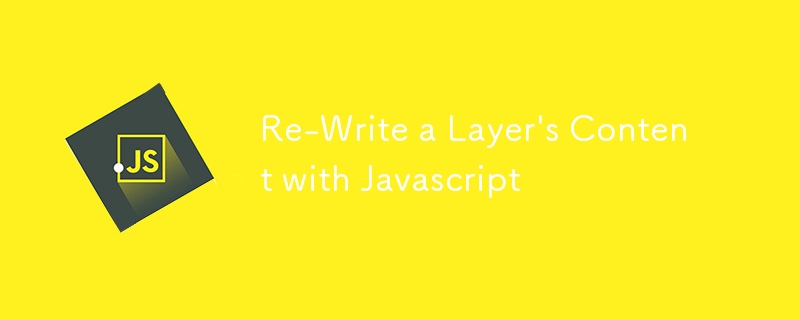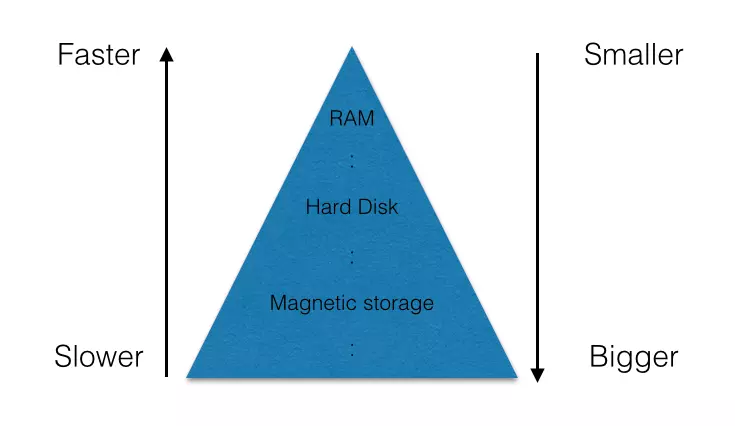Found a total of 10000 related content

How do I use Layui's layer component for modal dialogs and notifications?
Article Introduction:This article demonstrates Layui's versatile layer.open() function for creating custom modal dialogs and notifications. It details using type parameters (e.g., 1 for HTML, 0 for alerts), customizing appearance via CSS and options (e.g., area, skin),
2025-03-12
comment 0
847

How do I customize Layui's layer appearance and behavior?
Article Introduction:This article details customizing Layui's layer component. It explains modifying appearance via CSS overrides and the skin option, controlling animations using the anim parameter, and adjusting position/size with options like offset, area, maxmin, fi
2025-03-12
comment 0
453

What is Provide and Inject in Vue?
Article Introduction:Provide and inject in Vue are mechanisms for cross-level component communication. The parent component provides data through the provide, and descendant components receive through inject, without passing props layer by layer or using global state management. It is suitable for sharing stable configuration data such as topics, languages, etc. When used, the parent component returns the data to be shared in the provider, and the child component declares the required fields in the inject. Default values ??can be set to enhance fault tolerance. Note that ordinary values ??are not responsive and need to be responsively updated using ref or reactive packaging. Unlike Vuex/Pinia, provide/inject is suitable for local sharing within component trees, while state management libraries are more suitable for complexity.
2025-07-04
comment 0
530


'React or Next.js? Key Differences Every Developer Should Know'
Article Introduction:1. Overview
React:
.React is a popular JavaScript library developed by Facebook for building user interfaces. It's known for its component-based architecture, making it ideal for building reusable UI components. React focuses on the view layer and
2024-11-06
comment 0
1120


What is the inject key in Provide Inject?
Article Introduction:Injectkey is an identifier used in Vue.js to get the provided value from an ancestor component. It works similar to React's ContextAPI, allowing data to be passed across levels without passing props layer by layer. When using this key, you need to declare the inject option of the child component. For example, ['theme'], Vue will look up the matching provide value; if the default value is not found and the default value is set, the default value can also be used; you can also mark whether it is required; to avoid naming conflicts, it is recommended to use Symbol instead of string as key in complex scenarios.
2025-07-19
comment 0
746

Fetching Data in Your React Application
Article Introduction:React, a leading library for building dynamic web applications, focuses primarily on the view layer within the MVC architecture. This tutorial explores a fundamental aspect of web development: fetching and displaying data within a React application.
2025-03-06
comment 0
905

How does provide and inject allow for deep component communication without prop drilling in Vue?
Article Introduction:In Vue, provide and inject are features for directly passing data across hierarchical components. The parent component provides data or methods through provide, and descendant components directly inject and use these data or methods through inject, without passing props layer by layer; 2. It is suitable for avoiding "propdrilling", such as passing global or shared data such as topics, user status, API services, etc.; 3. Note when using: non-responsive original values ??must be wrapped into responsive objects to achieve responsive updates, and should not be abused to avoid affecting maintainability.
2025-06-20
comment 0
739

Understanding React Context API for Global State
Article Introduction:React's ContextAPI is a mechanism for passing data in a component tree without manually passing props layer by layer. 1. It is suitable for sharing global state, such as user information, topic or language preferences; 2. Create Context using React.createContext() and can provide value through Provider; 3. Subcomponents obtain context values through useContext; 4. UseState or useReducer to manage global state; 5. Suitable for cross-level access, but not for complex states with frequent updates; 6. Be careful to avoid abuse of Context and unnecessary re-rendering, useMemo or useCa
2025-07-18
comment 0
374

Re-Write a Layer's Content with Javascript
Article Introduction:Modifying webpage content dynamically without server requests is a frequent task for web developers. Layers offer a straightforward solution. This article demonstrates a reusable JavaScript function for updating layer content across major browsers (
2025-03-06
comment 0
840

Example of using provide and inject in Vue 3
Article Introduction:In Vue3, provide and inject are used to pass data across levels, suitable for component structures with deeper nesting of parents and children. 1. Provide data is defined by ancestor components, and inject data is received by descendants to avoid passing props layer by layer; 2. Ref or reactive can realize responsive data transfer, and descendants can update data by modifying the ref value, but it is recommended to combine function control update logic to keep it clear; 3. It is often used in component libraries to implement global configuration or theme customization, and provide configuration through plug-ins, and inject internal components; 4. To avoid naming conflicts, namespace prefixes can be added to the key or encapsulation tool functions can be managed uniformly.
2025-07-18
comment 0
979

Caching a MongoDB Database with Redis
Article Introduction:This tutorial demonstrates how to boost the performance of a Node.js web service interacting with a MongoDB database by implementing a Redis caching layer. We'll build a "fastLibrary" application to illustrate the concept.
Key Advantages o
2025-02-19
comment 0
1158

Understanding SSL, Encryption, and Their Importance in Web Applications
Article Introduction:In today's digital landscape, security is paramount. As cyber threats continue to evolve, securing data transmission and protecting user information is critical for any web application. SSL (Secure Sockets Layer) and encryption play vital roles in sa
2024-10-18
comment 0
503


What is the Decorator pattern?
Article Introduction:The decorator pattern is used to dynamically add new functionality to objects, and its core lies in flexible expansion through composition rather than inheritance. When you need to combine functions in different ways (such as encryption, compressed messages), avoid code confusion caused by factor explosions. The decorator mode implements function overlay by wrapping the original objects layer by layer, while maintaining a unified interface. The specific steps are: 1. Define the public interface or base class (such as IMessage); 2. Create basic components (such as TextMessage); 3. Build abstract decorator classes, hold component references and implement the same interface; 4. Implement specific decorators (such as EncryptedMessageDecorator, CompressedMessageDecorator)
2025-07-02
comment 0
536

How to use v-model on a custom component?
Article Introduction:To enable v-model in Vue custom component, you need to: 1. Declare modelValueprop; 2. Notify the parent component data changes through $emit('update:modelValue'). For example, bind modelValue in input and trigger an event. If you need to support multiple v-models (Vue3), you can use naming methods such as v-model:title and declare the corresponding prop and emit. When maintaining variables internally, it is recommended to use data or computed for intermediate layer synchronization to avoid directly modifying props.
2025-07-14
comment 0
976

Progressive Web App (PWA) Best Practices for H5
Article Introduction:To develop a PWA web application with native experience, four key points must be paid attention to: 1. Use ServiceWorker reasonably to manage cache policies, version updates and cache cleaning; 2. Configure WebAppManifest to achieve installation capabilities and visual consistency; 3. Optimize first-time loading performance to improve Lighthouse scores; 4. Carefully support push notifications to ensure that user value is preferred. These key points progress from the caching mechanism to the user experience layer by layer, forming the core practice of PWA development.
2025-07-16
comment 0
399

Exploring Visual Compositing with CSS mix-blend-mode
Article Introduction:mix-blend-mode is an attribute in CSS that controls the way elements and background content are mixed. It allows web page elements such as text, images, etc. to produce a mixed effect similar to Photoshop layer. 1. Common values ??include normal, multiply, screen, overlay, etc.; 2. Suitable for scenes such as text and background fusion, multi-layer overlay, dynamic interaction design, etc.; 3. Pay attention to background dependence, browser compatibility, performance impact and readability issues when using it; 4. Beginners can start by setting background pictures, adding text or color blocks and trying different blending modes.
2025-07-09
comment 0
258

How to structure a complex web application using semantic tags?
Article Introduction:Using semantic tags in complex web applications not only improves accessibility and SEO, but also enhances maintenance and team collaboration efficiency. 1. Semantic tags such as,,,, etc. can clearly express the page structure and content purpose; 2. Suitable semantic tags should be selected in component development, such as wrapping the article summary and encapsulating the sidebar; 3. Pay attention to avoid abuse and multi-layer nesting to ensure uniqueness; 4. Combine ARIA attributes to enhance interactive accessibility, and test accessibility support through tools. Rationally planning the HTML semantic structure can significantly improve project quality and maintenance efficiency.
2025-07-20
comment 0
460



















